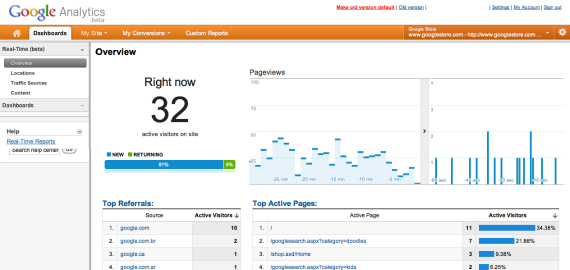Facebook Launches “People Talking About This” Metric, Premium Ad Unit & More

Facebook is launching a new “People Talking About This” metric for fan pages this week, designed to show conversations happening about a brand or page owner across the web. It’s part of an upgraded Page Insights tool. Also released is a new Page Insights API tool.
Facebook emailed us the information about the launches tonight, which coincide with the start of Advertising Week in New York tomorrow. Given it’s a Sunday evening, I’m just going to post what was sent, and we may do a deeper follow up tomorrow.
Page Insights Tool
Facebook emailed the following about the updated tool:
With the new Page Insights, Facebook is emphasizing the importance of sharing on Pages, because this increases a brand’s reach, and reach is an important metric to marketers. Facebook has enhanced Insights to show brands how to get more people talking about and sharing the things Pages/brands put on their Pages, which is key to getting a brand’s message out to more people. And research shows that word-of-mouth conversations among friends are the most influential for getting a brand’s message across.
With the new Page Insights, Pages can:
See how posts they put on their Page reach people on Facebook – beyond their fans.
See Total Likes, number of Friends of Fans of a Page, the new public and internal Pages metric, ‘People talking about this’, and Weekly Total Reach of a Page
Optimize content for posts -whether they’re photos, videos, questions, etc. – see what’s working best at reaching the most people, and how to increase the viral nature of these posts.
Facebook also sent this screenshot:

People Talking About This
About the new “People Talking About This" metric (which is to roll out this week, Facebook told us), Facebook emailed:
“People Talking about this" counts ‘stories" – structured content that people choose to share through Facebook that is eligible to appear in a user's news feed:
liking your Page
posting to your Page's Wall
liking, commenting or sharing one of your Page posts (or other content on your page – like photos, videos, albums)
answering a Question you posted, RSVP-ing to one of your events
mentioning your Page, phototagging your Page
liking or sharing a check-in deal, or checking in at your Place.
Conversations On Pages
About “Conversations On Pages," Facebook emailed:
1. Conversations on Pages let brands reach more than just their Fans – which is important in increasing awareness, finding new customers, and even driving sales.
2. Friends of Fans represent a larger set of consumers than just a brand's Fans – 34x larger, on average for the top 100 brand Pages, and 81x larger for the top 1000 (comScore).
3. Friends of Fans are also much more likely to visit a store, website, and even purchase a product or service (comScore).
4. Starbucks Fans & Friends of Fans spend 8% more in stores and are transacted 11% more frequently than average Starbucks customer (comScore)
5. Bing Fans conduct 68% more searches on Bing than average Bing searcher. Friends of Fans conduct 27% more searches on Bing (comScore)
Premium Ad Unit
About the new Premium Ad Unit, Facebook emailed:
Investing in ads helps boost a Page's brand messages, and we've seen that social context around advertising is both better for brands and better for people because the advertising becomes more relevant.
So today Facebook is also introducing a new expanded Premium ad unit that combines Page posts with social context from your friends when available. When the person viewing this brand's ad has friends connected to this brand's Page, Facebook will expand the unit to include a line above that shares which friends like the Page – thus combining the brand's voice in the ad with a friend's voice, together.
Facebook sent this screenshot of the new ad unit:

Facebook Page Insights API
About the new Facebook Page Insights API, Facebook emailed:
To encourage third party development and analytics innovation, Facebook is also announcing a Page Insights API for the analytics developer community, so that they can create customized Page Insights solutions for existing and potential clients.
Webtrends (Gatorade, Simon Malls), Wildfire (Electronic Arts and Virgin Atlantic) and Context Optional (Sony Playstation and Levis) are already creating customized insights tools for clients based on the new Page Insights through the Facebook Insights API.
Content Copied From http://searchengineland.com/






